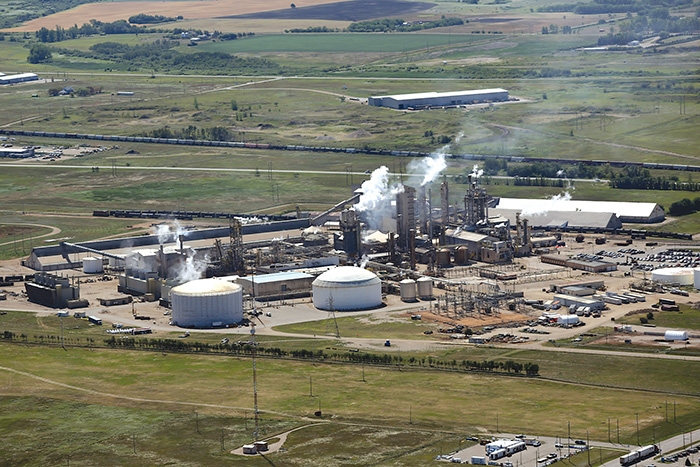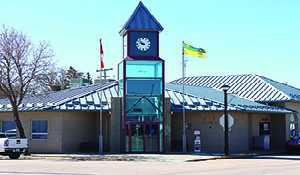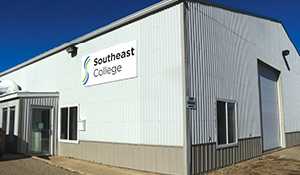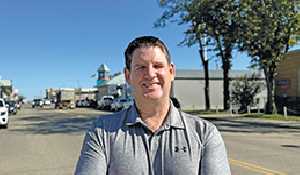Sask hopes to attract chemical fertilizer plants
August 18, 2020, 3:13 pm
Victor van der Merwe Local Journalism Initiative Reporter


The Saskatchewan provincial government is hoping to attract new fertilizer plants to the province by introducing a new incentive program.
This SaskFirst new growth tax incentive program is intended to attract new capital investments in large-scale chemical fertilizer production facilities in Saskatchewan, while at the same time create new construction and operational jobs in the province.
“This new Saskatchewan Chemical Fertilizer Incentive makes our strong investment environment even more attractive,” Trade and Export Development Minister Jeremy Harrison said.
“Our ambitious Growth Plan 2030 highlighted the creation of this SaskFirst new growth tax incentive, which will help ensure the competitiveness of Saskatchewan as we focus on critical economic recovery now and strong economic growth for our province over the next decade.”
Growth Plan 2030
The Growth Plan 2030 was first outlined in the provincial government’s 2019 Speech from the Throne, entitled A New Decade of Growth. The 30 goals that the program hopes to reach in the next ten years include:
• 1.4 million people living in Saskatchewan.
• 100,000 new jobs.
• Grow private capital investment in Saskatchewan to $16 billion annually.
• Increase the value of exports by 50 per cent.
• Grow the number of international markets to which Saskatchewan exports more than $1 billion.
• Grow Saskatchewan’s agri-food exports to $20 billion.
• Increase crop production to 45 million metric tonnes and livestock cash receipts to $3 billion.
• Expand irrigation in Saskatchewan.
• Increase agriculture value-added revenue to $10 billion.
• Crush 75 per cent of the canola Saskatchewan produces in Saskatchewan.
• Process 50 per cent of the pulse crops Saskatchewan produces in Saskatchewan.
• Double meat processing and animal feed value-added revenue to more than $1 billion.
• Increase oil production by 25 per cent to 600,000 barrels per day.
• Increase the annual value of uranium sales to $2 billion.
• Increase the annual value of potash sales to $9 billion.
• Double the growth of Saskatchewan’s forestry sector.
• Grow Indigenous participation in Saskatchewan’s natural resource industries.
• Triple the growth of Saskatchewan’s technology sector.
• Increase the value of Saskatchewan manufacturing exports by 50 per cent.
• Increase tourist expenditures in Saskatchewan by 50 per cent.
• Enhance oil recovery, carbon capture utilization and storage and position Saskatchewan as the best place in North America to test, commercialize and scale new oil and gas technologies.
• Invest $30 billion in infrastructure over the next decade.
• Build and upgrade 10,000 kilometres of highways.
• Expand Saskatchewan’s export infrastructure.
• Keep the budget balanced.
• Keep Saskatchewan’s debt-to-economic growth (GDP) ratio within the top three in Canada.
• Deliver on Saskatchewan’s climate change strategy, Prairie Resilience.
• Advance development of zero-emission small modular reactor technology.
• Support communities through $2.5 billion in revenue sharing.
• Reduce surgical wait times to a three-month target.
The SCFI fulfills the commitment in Saskatchewan’s Growth Plan to introduce a chemical fertilizer incentive to encourage investment in the sector in Saskatchewan.
The SCFI is a non-refundable, non-transferable 15 per cent tax credit on capital expenditures valued at $10 million or more for newly constructed or expanded eligible chemical fertilizer production facilities in Saskatchewan.
“Our province has what the world wants in food, fuel and fertilizer,” Harrison said. “This new program will build on Saskatchewan’s already world-class agriculture and fertilizer sectors, helping to diversify and strengthen those industries, our exports, and grow the larger economy right here at home.”
To accommodate projects that have been initiated, the program was effective November 1, 2017, and applications for conditional approval must be received before December 31, 2026, to be eligible.
The SCFI has no restrictions as to where in the province these new businesses can set up shop.
“There isn’t a particular area of our province identified as best-suited for a chemical fertilizer production facility; the location for any facility could vary, depending on where the inputs come from, locations that best fit supply chains to manage both inputs and outputs, for example,” said Harrison.
Remain Competitive
The fertilizer industry is a major contributor to the GDP and jobs in Saskatchewan. Historically, Saskatchewan has been an attractive fertilizer processing region due to its proximity to large-scale agricultural operations and effective multi-modal logistics infrastructure for export purposes. The SCFI program will diversify and grow the fertilizer industry in Saskatchewan.
The plan is to make sure that Saskatchewan keeps being a competitor in the fertilizer industry.
“Historically, Saskatchewan has been a large competitive producer of traditional fertilizers and crop nutrients. To remain competitive in the fertilizer industry, increased chemical fertilizer production must be pursued as it becomes a more prevalent means to enhance crop yield for the province’s many agricultural producers. A diversified fertilizer industry will support the agriculture sector here at home, and it will grow exports and the Saskatchewan economy,” says Robin Speer, Director of Communications at the Ministry of Trade and Export Development.
He goes on to say that this is just one of many incentive programs launched by the province.
“Saskatchewan offers a number of incentive programs to generate investment, create jobs, and contribute to Saskatchewan’s key economic sectors, programs such as the Saskatchewan Value-added Agriculture Incentive, the Saskatchewan Commercial Innovation Incentive, the Oil and Gas Processing Investment Incentive, among others. The SCFI program was established due to the large adoption of chemical fertilizers by agricultural producers. In order for Saskatchewan to maintain employment, preserve taxation revenue, and remain a competitive region for investment in the fertilizer industry, competitiveness measures must be in place to attract investment in chemical fertilizer processing facilities,” says Speer.
Time will tell
Clayton Kotylak, who serves on the Saskatchewan board for Western Canadian Wheat Growers, thinks this is a great incentive introduced by the government.
“It is for companies valued at $10 million or more, and it is for new construction, so you would have to think that there would be a lot of jobs (created) in the construction stages and in the production phase of it, so Western Wheat Growers are very supportive of this type of initiative. It adds jobs and further strengthens the backbone of our economy which is agriculture,” said Kotylak.
The hope is that this incentive attracts people from outside of Saskatchewan to invest in the province.
“If foreign investment in particular comes to Saskatchewan to take advantage of this program that will be the main way of gauging success. The next level of gauging success is how many companies actually apply for the program. I’m really hoping that it attracts large foreign investment,” says Kotylak.
Outside investment can mean more people coming to live in Saskatchewan and that means that the SCFI could help the province meet the goal of having 1.4 million people living in Saskatchewan.
This kind of incentive will benefit not just agriculture.
“Mining and agriculture are very big in Saskatchewan and the program really helps both those sectors,” said Kotylak.
Why had it taken so long for such an incentive to be created?
“I suppose we can look back at any incentive program and wonder why we didn’t do this sooner. I too wish that this kind of initiative was offered a generation ago,” says Kotylak.
The success of the SCFI program remains to be seen and will depend on companies taking advantage of it.
“It can be big, but it is up to the investors and the larger fertilizer chemical companies to take that initiative. The ball is in their court now and I really hope that we attract a good number of companies and thousands of jobs, but time will tell,” said Kotylak.



































